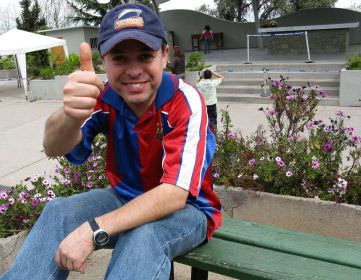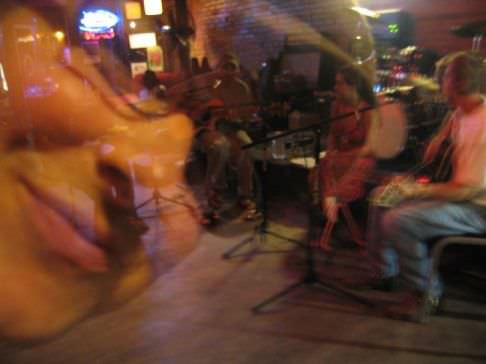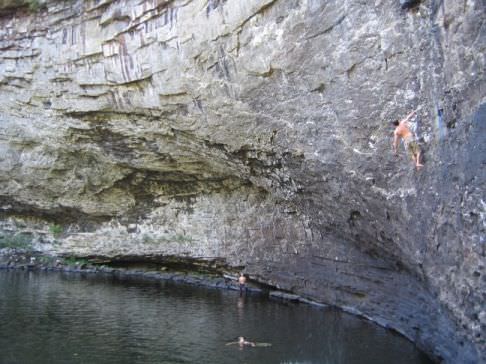My seatmate on the red-eye flight from Miami to Santiago appointed himself my tour guide/body guard during my 15-hour layover in Chile’s capital city. We stowed my bags at the airport and his bags in a hostel across the street from the Tur Bus station downtown and set out to see the city — me, for the first time ever, and him, for the first time in a year. Mauricio is a 35-year-old native of Santiago who had been at sea for the last 12 months, working the bar on a Disney cruise ship. He was back for a two-month vacation before heading to the Caribbean in December for another year of work. He speaks five languages — English included — and is used to interacting with foreigners.
The marked difference between the rich and poor in Santiago makes for a good deal of petty crime — pickpockets, mainly — Mauricio said. The city is safe during daylight hours, when police are abundant, but he advised me to hide my digital camera in the poorer parts of town, keep my hand in my pocket if I carried anything of value inside and always watch my back.
We walked through the courtyard of the Palacio de la Moneda, the presidential palace, and stopped into the Catedral Metropolitana, a neoclassical church overlooking the Plaza de Armas, on our way to el Mercado Central for lunch. We chose Galeon, a mid-priced restaurant on the second floor of the fish market, where each marble-topped table holds a plate of four lemons to complement the cuisine. The mixed seafood plate we shared featured nine types of pescado caught off Chile’s outrageously long coast. All of the dishes were very tasty —not nearly as scary as they could have been (by that, I mean no fish heads watched us eat).
Afterward, we took a cab to the Cerro de San Cristobal, the hill of Saint Christopher, a vertically-oriented park capped by a 14-meter marble statue of the Virgin Mary. Many choose to walk or cycle the curvy road leading up to the statue, but we went by funicular.
And fun it was. The train creeps 485 meters up a track, much like Chattanooga’s Incline Railway to the top of Lookout Mountain, and stops at an overlook of sprawling Santiago and the snow-capped Alps beyond it. It’s the view is the best around, though it’s clouded by a bit of smog.
Later, we rode the teleferico , a gondula-style operation, along a wire to a station near the north end of Pedro de Valdivia Norte Avenue 200 meters away. Dangling hundreds of feet over the city, we got a view of a different part of town, where the skyscrapers were taller and the homes had backyard pools.
The day was punctuated by drink stops in parks, cafes and restaurants. In some cases, I had what you’d expect of me — water (sin gas), coffee, Sprite. I also tried some Chilean specialties, though, most notably mote con huesillo, a sweet mixture of peaches, peach syrup and boiled corn kernels, of all things. It was good, but so sugary I could feel my teeth decaying after half a cup.
Later, I had a Corona on the patio of La Casa en El Aire Libre, an international café in the funky Bellavista neighborhood, which I’d highly recommend. Then, it was off to El Romano, our final stop, a hole-in-the-wall bar Mauricio remembered from his younger days. In a room lit by a single bulb, we sipped a couple of cheap but good Chilean beers. Mauricio requested Toto’s “Africa” on the jukebox and sang along. And then Juan, Mauricio’s best friend, arrived to drive me to the airport for the last leg of my journey to Punta Arenas.
While I’m sure I could have managed Santiago alone, I would not have felt so at ease or welcome to the country without the company someone as eager to share as my companion for the day. Gracias, Mauricio!












